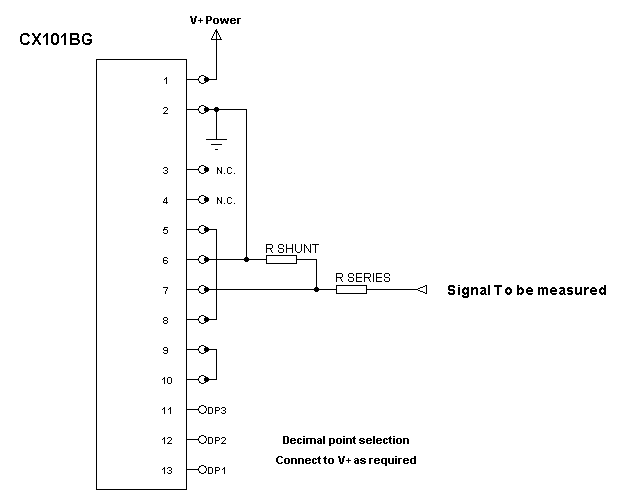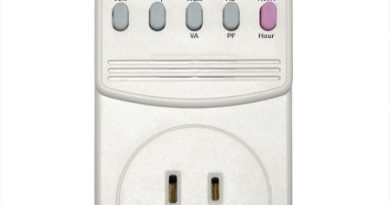Using the CX101BG Digital Panel Meter (DPM)
The CX101BG Digital Panel Meter from Circuit Specialists is an easy to use DPM
used in any system where the Power source and measured voltage share a
common Ground connection. Unlike its counterpart, the CX101A, this DPM
cannot be used with the Voltage divider PCB CX-ADD ON Board. This application
note will provide instructions on how to use this DPM for different voltage ranges.
Like all Digital Panel Meters, the full scale range of this DPM is 200 mv full-
scale. The basic connection is shown in the drawing below. If other full scale
voltage ranges are desired, suitable voltage divider resistors are required. We will
describe how to calculate these values and provide a table for easy reference.
To keep the calculated values within a range that is readily obtainable, we will use
10 Meg ohms as the maximum series resistor value. We can then calculate the
shunt resistor for our voltage divider network using the voltage divider equation
Vout/Vin=Rshunt/(Rseries + Shunt)
shunt resistor value. The results are tabulated below for full scale voltage values
of 2 Volts, 20 Volts, and 200 Volts.
Use Rseries = 10 Meg Ohms for all three ranges.
For 2 Volts full-scale
For 20 Volts full-scale Rshunt= 101 K ohms (Use 100 K ohm)
For 200 Volts full-scale Rshunt= 10.01 K ohms (use 10 K ohm)
Note that the voltage value displayed on the meter can be fine-tuned by adjusting
the trimmer potentiometer on the back of the DPM. Obviously if 200 mV full scale
is desired, Rshunt would not be used and Rseries would be replaced by a direct
connection to pin7.
This application note has shown how easy it is to determine the Resistor values
required to utilize the CX101BG Digital Panel Meter for various voltage ranges.
The connection diagram is shown below.
rearranging we can solve for the required
Rshunt= 1.111 Meg ohms (Use 1.1 Meg Ohm)

